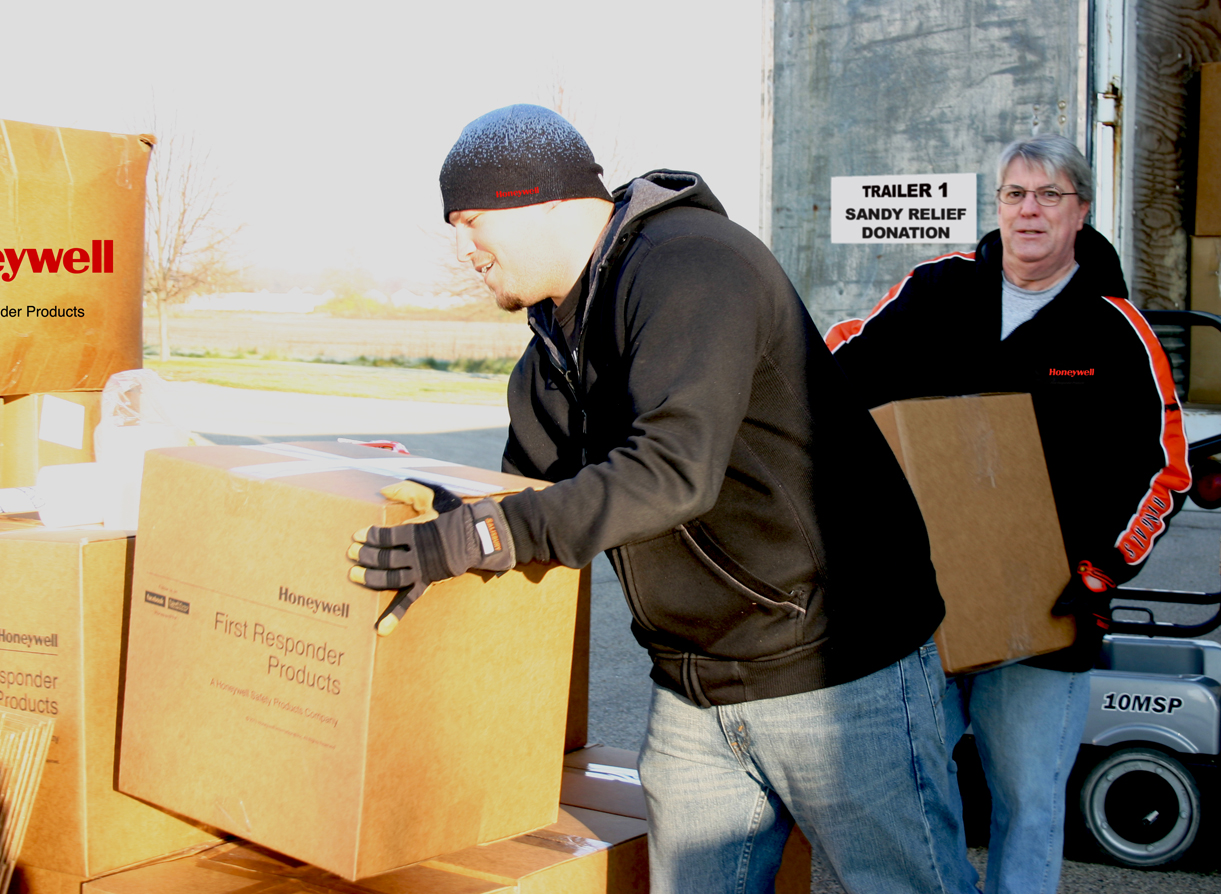Honeywell is donating more than $600,000 in first responder products to aid in relief and recovery efforts in areas devastated by Hurricane Sandy.
Honeywell, the makers of Morning Pride turnout gear for first responders, will donate more than 19,000 personal protective products including protective footwear, gloves, hoods and helmets, designed to weather the most arduous conditions first responders face every day. The protective gear will be distributed via the Nassau County Office of Emergency Management in Long Island, New York, to first responder teams in affected areas in New York and New Jersey.
Honeywell also announced the Honeywell Humanitarian Relief Fund (HHRF) has been deployed to support employees who have been affected by the devastating hurricane. Support will initially include immediate cash assistance for food, clothing, and shelter to employees who have been temporarily displaced. Honeywell will also match employee contributions to HHRF dollar for dollar.
Over the last year, Honeywell has donated more than $1 million of safety products to support disaster relief, first responder and other non-profit agencies to protect those serving our communities. Through the HHRF, the company and thousands of Honeywell employees have responded with donations and long-term rebuilding efforts for other tragedies in recent years, such as the tsunami in Japan, the Colorado wildfires, the earthquake in Haiti, tornadoes in North Carolina, hurricanes Ike and Katrina, and the earthquake in China. +
Related Stories
| Jan 19, 2011
Architecture Billings Index jumped more than 2 points in December
On the heels of its highest mark since 2007, the Architecture Billings Index jumped more than two points in December. The American Institute of Architects reported the December ABI score was 54.2, up from a reading of 52.0 the previous month.
| Jan 19, 2011
Large-Scale Concrete Reconstruction Solid Thinking
Driven by both current economic conditions and sustainable building trends, Building Teams are looking more and more to retrofits and reconstruction as the most viable alternative to new construction. In that context, large-scale concrete restoration projects are playing an important role within this growing specialty.
| Jan 10, 2011
Architect Jean Nouvel designs an island near Paris
Abandoned by carmaker Renault almost 20 years ago, Seguin Island in Boulogne-Billancourt, France, is being renewed by architect Jean Nouvel. Plans for the 300,000-square-meter project includes a mix of culture, commerce, urban parks, and gardens, which officials hope will attract both Parisians and tourists.
| Jan 10, 2011
Michael J. Alter, president of The Alter Group: ‘There’s a significant pent-up demand for projects’
Michael J. Alter, president of The Alter Group, a national corporate real estate development firm headquartered in Skokie, Ill., on the growth of urban centers, project financing, and what clients are saying about sustainability.
| Jan 7, 2011
BIM on Target
By using BIM for the design of its new San Clemente, Calif., store, big-box retailer Target has been able to model the entire structural steel package, including joists, in 3D, chopping the timeline for shop drawings from as much as 10 weeks down to an ‘unheard of’ three-and-a-half weeks.
| Jan 7, 2011
How Building Teams Choose Roofing Systems
A roofing survey emailed to a representative sample of BD+C’s subscriber list revealed such key findings as: Respondents named metal (56%) and EPDM (50%) as the roofing systems they (or their firms) employed most in projects. Also, new construction and retrofits were fairly evenly split among respondents’ roofing-related projects over the last couple of years.
| Jan 7, 2011
Total construction to rise 5.1% in 2011
Total U.S. construction spending will increase 5.1% in 2011. The gain from the end of 2010 to the end of 2011 will be 10%. The biggest annual gain in 2011 will be 10% for new residential construction, far above the 2-3% gains in all other construction sectors.
| Jan 7, 2011
Mixed-Use on Steroids
Mixed-use development has been one of the few bright spots in real estate in the last few years. Successful mixed-use projects are almost always located in dense urban or suburban areas, usually close to public transportation. It’s a sign of the times that the residential component tends to be rental rather than for-sale.














